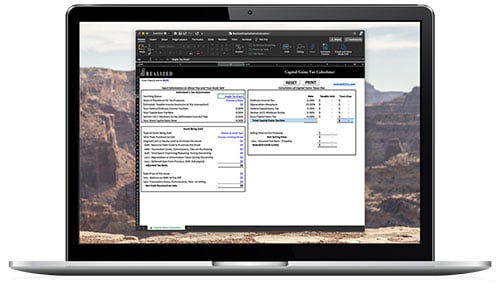
Subdividing land can be an effective strategy for real estate investors to unlock and maximize the value of a property. However, before proceeding with such a venture, it is crucial to understand the tax implications involved, particularly capital gains taxes, which can significantly affect the financial outcome.
Understanding Capital Gains Tax
Capital gains tax is levied on the profit realized from the sale of an asset. When you subdivide a piece of land and sell parts of it, each transaction is likely to trigger a taxable event. To calculate the capital gains, you must determine the adjusted basis of the land, which is the original purchase price plus any costs related to improvements, minus any depreciation taken. The difference between this adjusted basis and the selling price represents your capital gain, which is then subject to tax.
The tax implications can vary based on whether the gain is short-term or long-term. Short-term capital gains (investments held for less than a year before being sold) are taxed at ordinary income rates, which can be as high as 37%. Long-term gains (investments held for more than a year) benefit from lower tax rates of 0%, 15%, or 20%, depending on your income level.
Subdividing Land and Tax Considerations
When you subdivide land, the intent behind the sale is crucial in determining the tax treatment. If the subdivision is part of a business or development activity, the IRS may consider the land as inventory rather than a capital asset. This classification means that the profits would be subject to ordinary income tax rates rather than the preferred long-term capital gains rates. Thus, the clear delineation of purpose—whether the division is for investment or business—is essential.
Offsetting Capital Gains with 1031 Exchanges
One strategic approach to mitigate substantial capital gains tax liabilities is through a 1031 Exchange. This IRS provision allows real estate investors to defer capital gains taxes by reinvesting the proceeds from a sale into another property of like kind and equal or greater value. For subdividing land, this means you could potentially sell a subdivided plot and reinvest in another qualifying investment property. This deferral can provide liquidity to continue growing your investment portfolio without the immediate tax burden.
Engaging with Tax Professionals
Due to the complexities involved with capital gains taxes and potential changes in tax laws, consulting with tax professionals or real estate accountants is advisable when you consider subdividing land. They can help ensure the accurate calculation of your basis, identify applicable exemptions or tax treatments, and assist in navigating regulatory requirements. Proper planning can enhance your financial outcomes and help you maximize the profitability of your investment activities.
In conclusion, while subdividing land can unlock value and yield significant returns, it is imperative to address the associated capital gains tax implications. Thoughtful planning, strategic tax-deferral techniques, and professional advice can help mitigate potential tax liabilities, enabling you to achieve your financial objectives more effectively.


